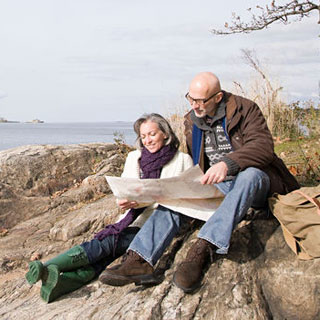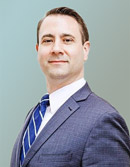Below you will find a real life case study of a couple who is looking for financial advice on how best to arrange their financial affairs. Their names and details have been changed to protect their identity. The Globe and Mail often seeks the advice of our VP, Wealth Advisor & Portfolio Manager, Matthew Ardrey, to review and analyze the situation and then provide his solutions to the participants.
![]()
Written by:
Special to The Globe and Mail
Published September 1, 2023

Joe is the age of 68 and his wife Kate is 56. Both have retired from the work force, Joe from the private sector at the age of 64, and Kate from the government at the age of 50.
They have a home in small-town British Columbia and a recreational property. Their only child, who is 23, lives on her own and is working full-time.
Kate has a defined benefit pension that is 70 per cent indexed to inflation and pays her $22,500 a year.
“We are in the de-cumulation stage of our finances and wondering if our strategy will last my wife’s life expectancy,” Joe writes in an e-mail. “We are also wondering whether she should commence her Canada Pension Plan at age 60 or wait until age 65 or later.”
Because Joe is likely to predecease Kate, “the longevity of our financial plan must last until Kate turns age 90 at a minimum, and ideally to her age 95,” Joe writes. “If all the RRSP/RRIF funds run out at that time, she will still have maximum allowable survivor’s CPP, Old Age Security and her pension, as well as the value of our home plus the tax-free savings accounts,” he writes.
“Our objective is to feel confident this long-term plan is viable and that we are not overdrawing on Joe’s registered retirement income fund.”
We asked Matthew Ardrey, a portfolio manager and financial planner at TriDelta Financial in Toronto, to look at Joe and Kate’s situation. Mr. Ardrey holds the certified financial planner (CFP), the advanced registered financial planner (RFP) and the chartered investment manager (CIM) designations.
What the expert says
“Joe and Kate have retired and are enjoying life together, but they have questions about when to take government pensions, the effect of inflation on their retirement and the age-old question of will they have enough,” Mr. Ardrey says.
Joe is taking his Old Age Security and deferring his Canada Pension Plan benefits to age 70. Kate is not yet eligible to take any government pensions.
“They expect Kate to live until at least age 90, and perhaps even to 95,” the planner says. For CPP this makes the question of whether or not to defer very clear, he says. The break-even age on CPP for taking it at 65 versus 60 is about the age of 74, and for taking it at the age of 70 versus 65 is about 82. “If she expects to live a long life, then deferring CPP until age 70 is the way to go.”
For OAS, the break-even point is further down the road, Mr. Ardrey says – around the age 84 for deferring to the age of 70. But there are complications with the OAS claw back. “By the time Kate is 72, she will have the pension income, CPP and OAS income, her own RRIF income and split RRIF income from Joe,” Mr. Ardrey says. So her OAS could be reduced. “Thus, with OAS we would recommend taking it at age 65.”
Kate and Joe are spending $8,500 a month plus $1,083 a month for their TFSA contributions, the planner says. Income tax is $917, for a total of $10,500. In his forecast, all expenses and contributions are indexed to the inflation rate, which is assumed to be 3 per cent.
Their monthly pretax income breaks down as follows: Joe’s OAS $688, his RRIF withdrawal $4,780, his interest income $222, Kate’s pension $1,875 and her interest income $222. That adds up to $7,787. To make up the shortfall and cover income tax, they draw about $2,713 from their investment portfolio.
Joe and Kate have a total investment portfolio of about $2.7-million, most of which is Joe’s $2.1-million RRIF. The asset mix is 25 per cent in cash and equivalents, and 75 per cent in stocks. “Of that 75 per cent in stocks, 87 per cent is invested in Canada.”
Although the cash and equivalents portion is a buffer against down markets, the 75 per cent remaining in stocks “certainly does introduce some additional volatility risk to their retirement plan,” Mr. Ardrey says. “Furthermore, the concentration of stock exposure increases the volatility risk.” Nearly three-quarters of the S&P/TSX Composite Index is in financials, energy, industrials and materials, the planner says. Toronto’s stock market lacks the breadth of other markets around the world, and the geographic diversification that goes along with it, he says.
“Based on the expected future returns of this portfolio and its current asset mix, we would expect it to return about 5 per cent per year,” Mr. Ardrey says. In this base case scenario, Joe and Kate can meet their retirement goal under the above assumptions.
“Though everything turns out great in the straight-line return scenario, we know that life and investments rarely ever move in a straight line,” the planner says. “To ensure the viability of this plan, we stress test it by using a Monte Carlo simulation.” A Monte Carlo simulation introduces randomness to a number of factors, including returns.
“In this plan, we have run 500 iterations with the financial planning software,” Mr. Ardrey says. For a plan to be considered “likely to succeed,” it must have at least a 90-per-cent success rate. If the rate is less than 70 per cent, it is considered unlikely to succeed. “Between there is somewhat likely.”
Based on the assumptions in the initial projection, the probability of success is 77 per cent, or in the lower half of the “somewhat likely” range, the planner says. “So despite their significant asset base, the heavier weight on equity investing has increased predicted volatility over time, making their retirement unsuccessful in about a quarter of the cases,” he says.
Because Joe and Kate are already retired, they don’t have the option of working longer or saving more. “They can choose to reduce their spending but for most people that is an unpopular option,” he says. “That would leave the choice to increase returns and/or reduce volatility.”
The major issue with their portfolio is the amount concentrated in stocks and the lack of geographic diversification, Mr. Ardrey says. “With interest rates at a much higher point than they have been in recent years, an increased allocation to fixed income is warranted.”
By taking their asset mix to 50 per cent stocks (geographically diversified), 30 per cent fixed income and 20 per cent cash equivalents, they could maintain their returns but significantly reduce the volatility. In that case, the Monte Carlo simulation puts their chances of success at 88 per cent, which is right on the threshold of the “likely to succeed” area.
Client situation
The people: Joe, 68, Kate, 56, and their daughter, 23.
The problem: Do they have enough savings to last Kate to the age of 95? When should she take government benefits?
The plan: Kate takes OAS at 65, but postpones CPP to the age of 70. They take steps to balance and diversify their investment portfolio.
The payoff: A better understanding of how to achieve financial security.
Monthly net income: $7,805.
Assets: Savings accounts and guaranteed investment certificates $227,915; Joe’s RRIF $2,086,945; Kate’s RRSP $101,620; spousal RRSP $286,975; his TFSA $121,950; her TFSA $121,435; residence $650,000; cottage $350,000. Total: $3.95-million. Estimated present value of Kate’s pension: $549,125 (Based on indexing of 70 per cent of inflation, currently at 3 per cent, as well as a 5 per cent discount rate and payments until she is 95).
Monthly outlays: Condo fees $470; property tax $250; water, sewer $15; home insurance $140; electricity $125; heating $65; security $40; maintenance $200; cottage expense $300; transportation $635; grocery store $1,235; clothing $300; gifts, charity $175; vacation, travel $900; contingencies $200; dining, drinks, entertainment $1,070; personal care $200; pets $275; sports, hobbies $550; subscriptions $135; other personal $200; health, dental insurance $480; life insurance $300; phones, TV, internet $235. Total: $8,495. Shortfall comes from savings.
Liabilities: None.
Want a free financial facelift? E-mail finfacelift@gmail.com.
Some details may be changed to protect the privacy of the persons profiled.

Matthew Ardrey
Portfolio Manager & Senior Financial Planner
matt@tridelta.ca
(416) 733-3292 x230
